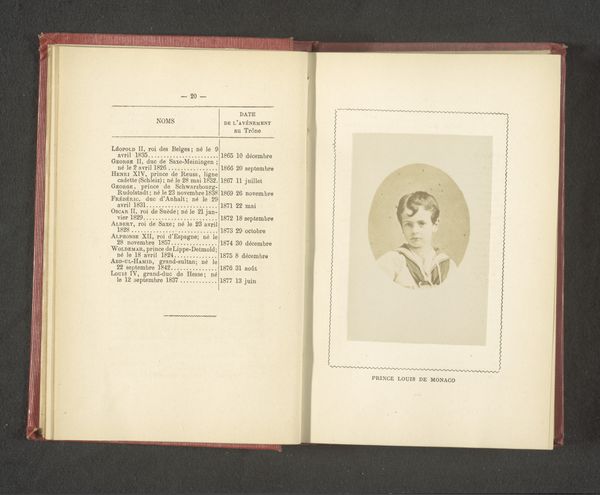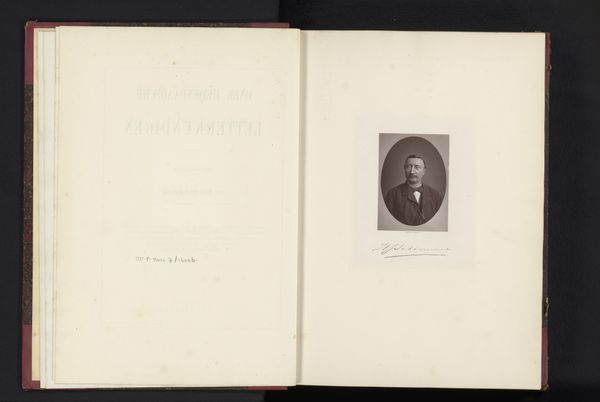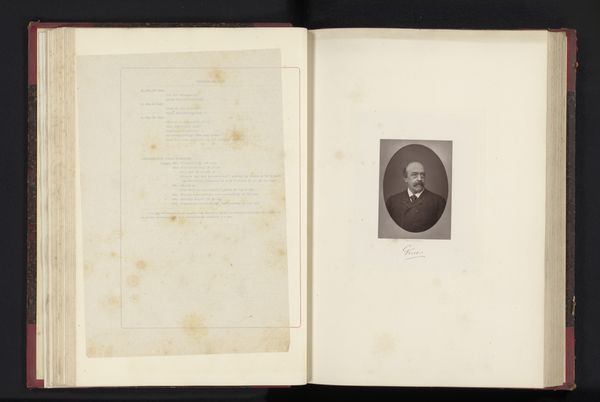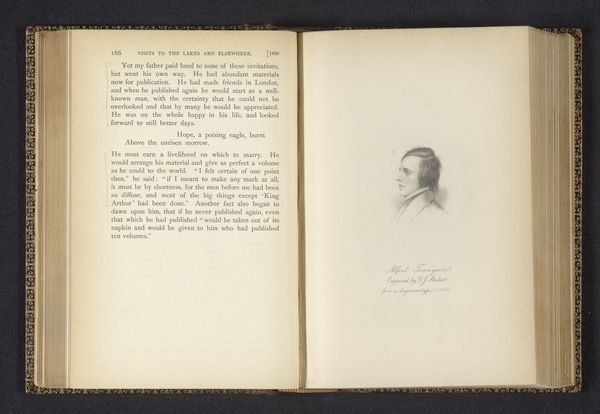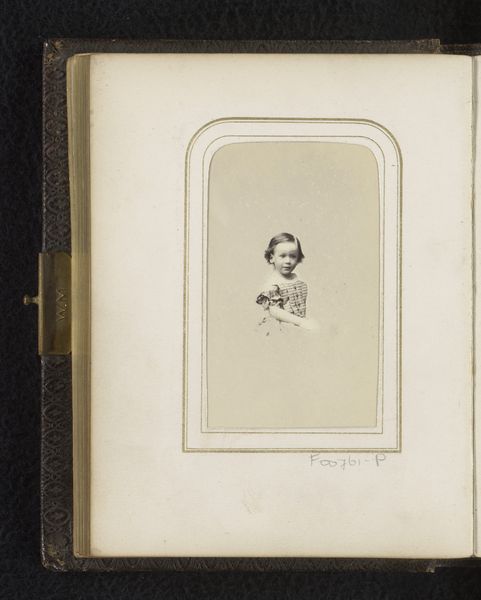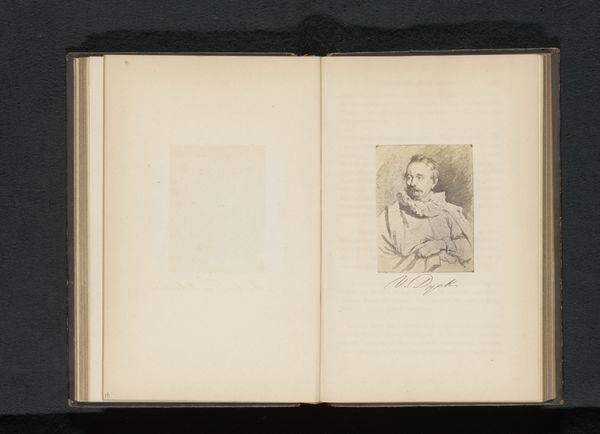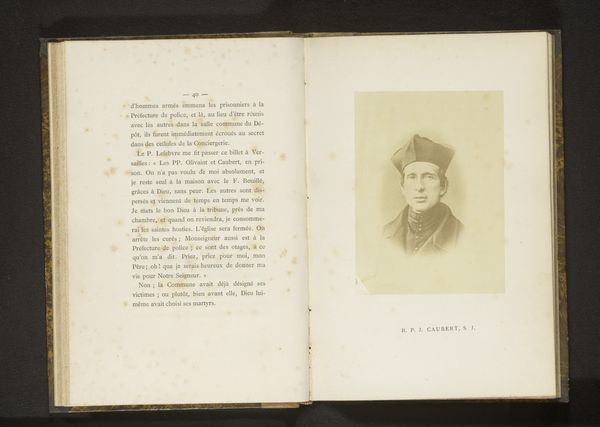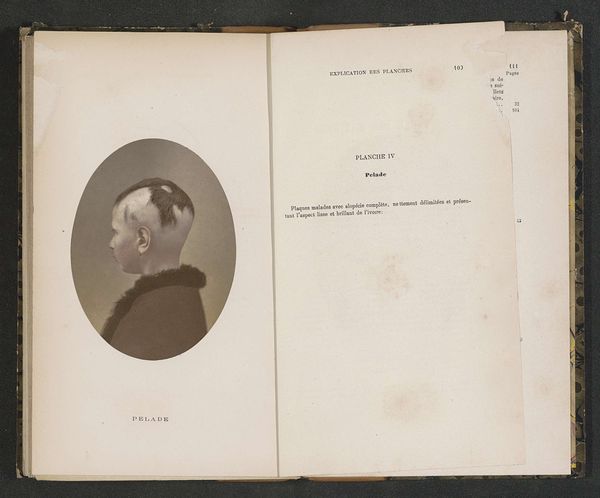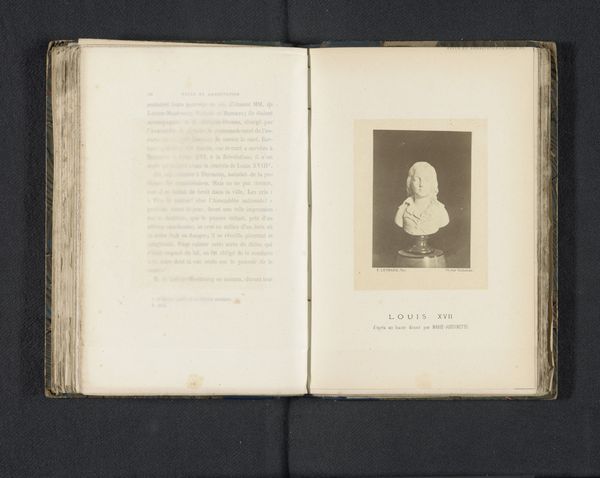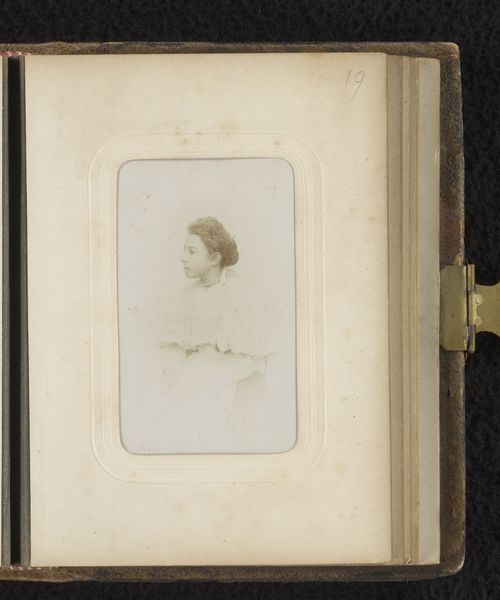
paper, photography
#
portrait
#
aged paper
#
homemade paper
#
light coloured
#
sketch book
#
hand drawn type
#
personal journal design
#
paper
#
photography
#
personal sketchbook
#
folded paper
#
sketchbook drawing
#
design on paper
Dimensions: height 92 mm, width 53 mm
Copyright: Rijks Museum: Open Domain
Editor: So, here we have a photograph – “Fotoreproductie van een portret van vermoedelijk Emmanuel Garnier” – which translates to photographic reproduction of a portrait of, presumably, Emmanuel Garnier. It's attributed to Petit & Trinquart, dating from before 1861. It appears to be a photo *in* a sketchbook, of some sort, made of aged paper. It gives such a sense of intimacy and discovery, doesn’t it? What jumps out at you about this piece? Curator: The reproduction itself is fascinating. Think about the materiality – the original photographic process, likely a wet collodion print, the socio-economic conditions enabling portraiture's shift to broader consumption through photography. Consider how portraiture, once exclusive, became more accessible via technological advancements in reproductive media, influencing social perceptions of self. What does it *mean* to have a reproduced image of oneself circulating? Editor: That’s interesting. So it’s less about *who* is in the portrait and more about *how* the portrait came to exist and be disseminated? Curator: Exactly! Consider the labor involved. The preparation of the chemicals, the sitting for the portrait, the printing process, the binding of the sketchbook. How were these tasks divided? Who benefitted from this early form of photographic dissemination? It’s a chain of material and social relationships made visible through this object. Look also at the handmade nature of the sketchbook itself, against the mechanically produced image; what commentary can we extract? Editor: So you’re highlighting the tension between handmade craft and emerging industrial processes...It is something to consider what its place was at that time. I never really considered the social impact that it had. Curator: Precisely. Considering the context surrounding this type of technological advancement lets you understand the scope of the implications to labor, trade, art, and more! It prompts critical questions about art, labor, and society.
Comments
No comments
Be the first to comment and join the conversation on the ultimate creative platform.

